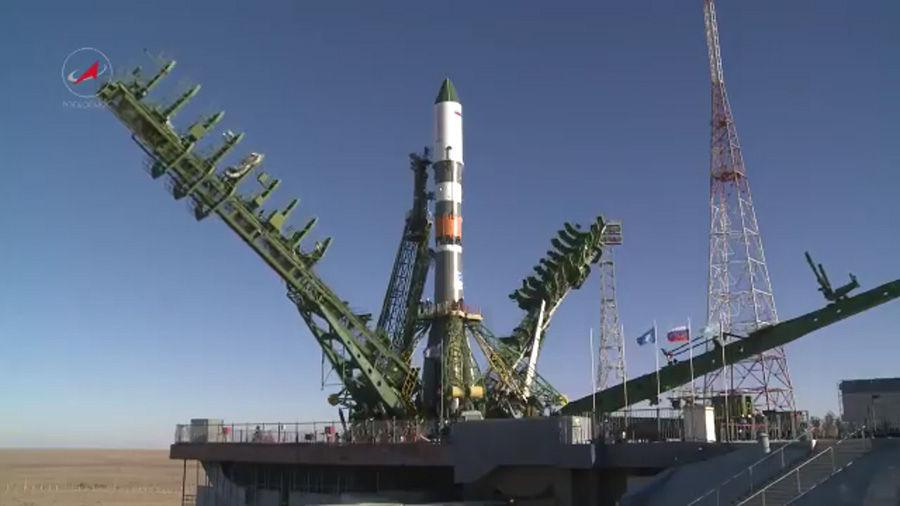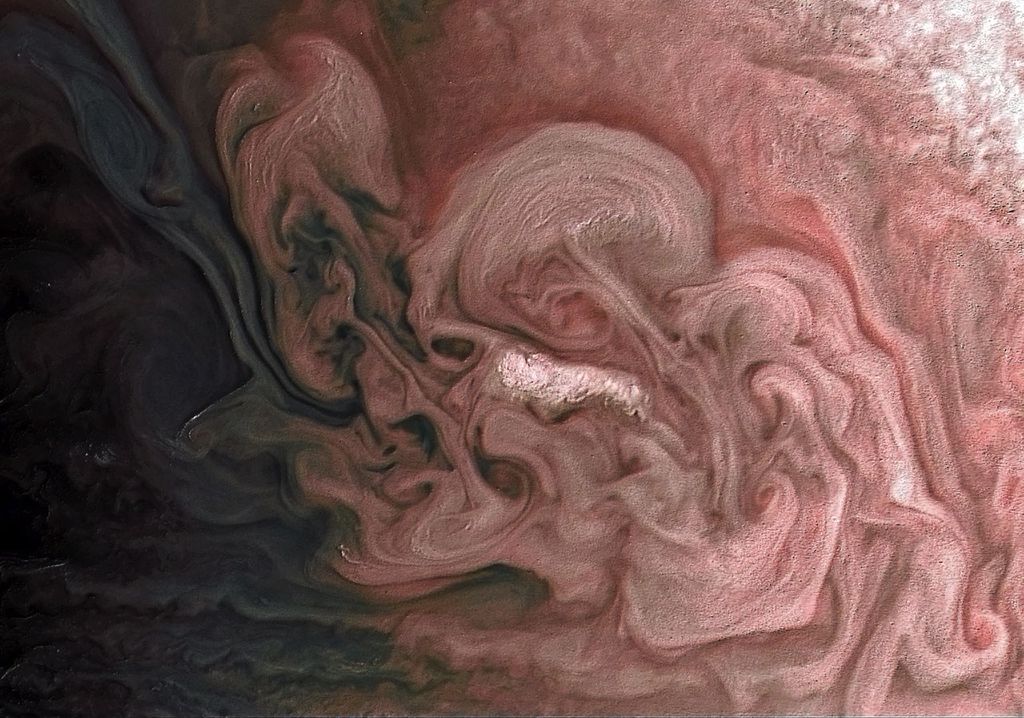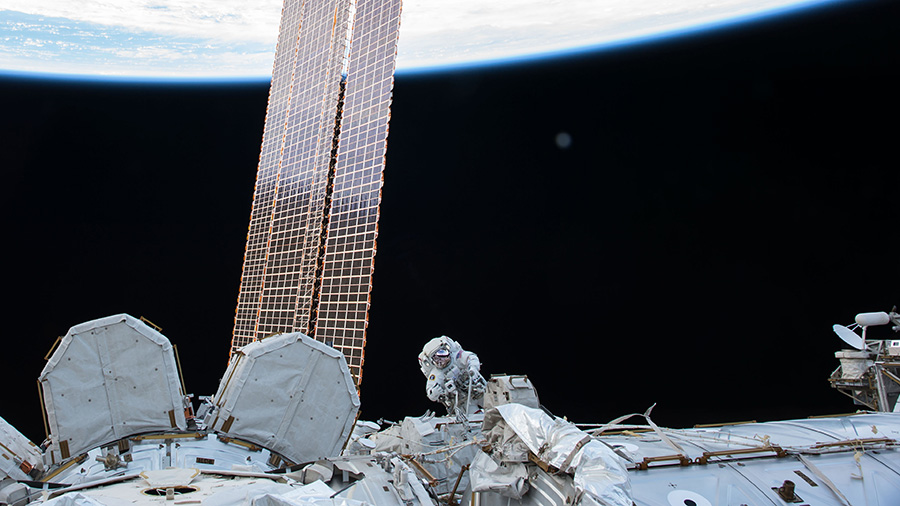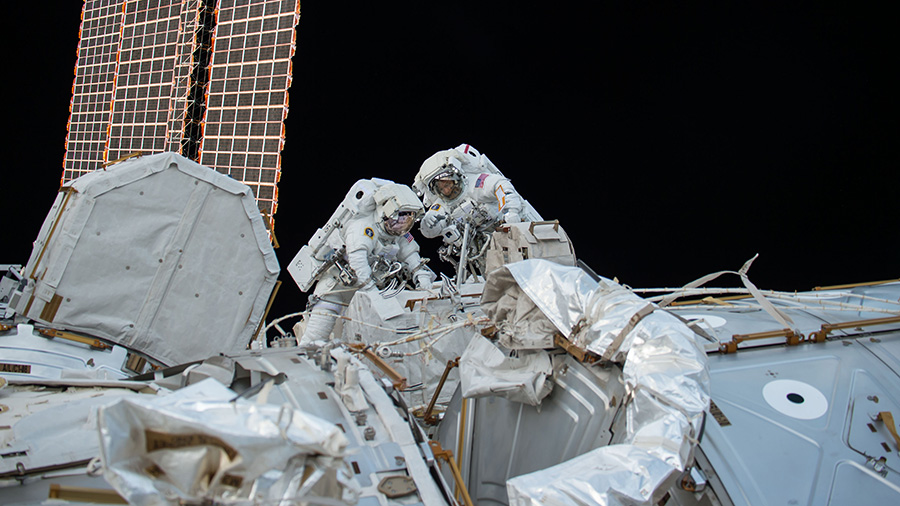Two astronauts checked in with ground engineers today after completing the second of three spacewalks yesterday that are planned for this month. Meanwhile, a Russian cargo ship stands at its launch pad ready to blast off Thursday morning on a short delivery trip to the International Space Station. Commander Randy Bresnik and Flight Engineer Mark …
Spacewalk Review Ahead of Thursday’s Cargo Delivery































